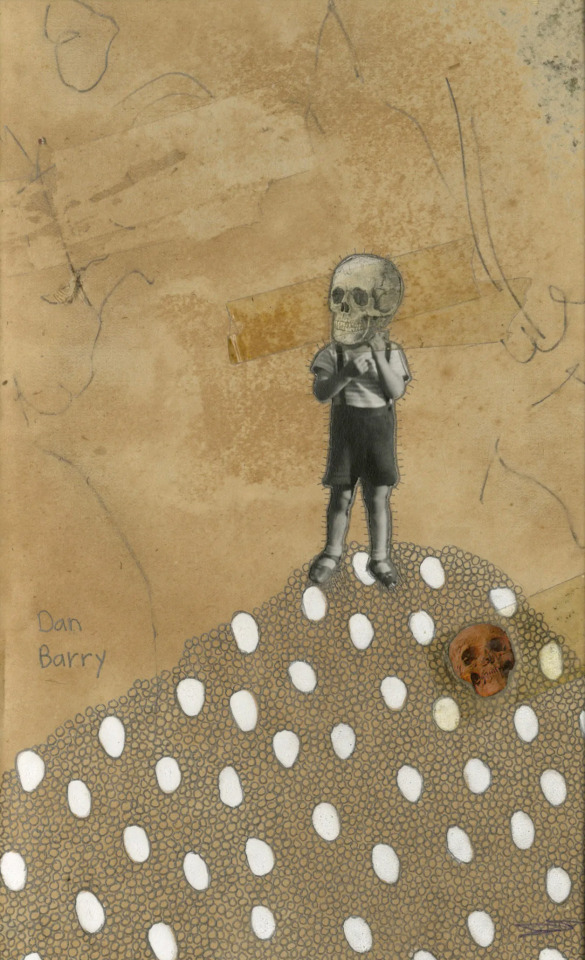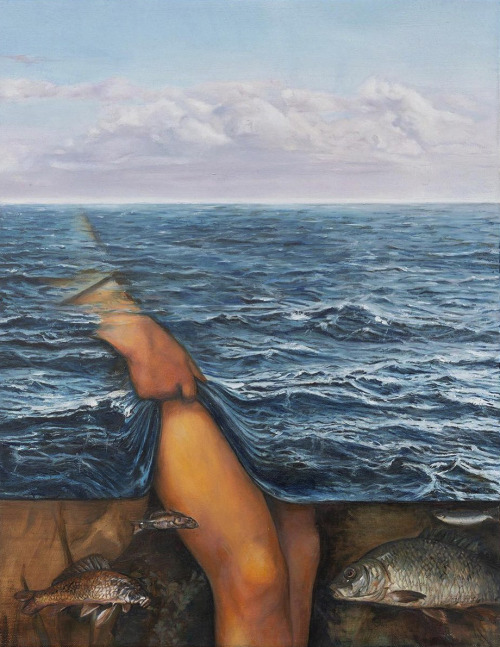HAPPY NEW YEAR EVERYONE HAPPY NEW YEAR!
Did you all have nice breaks? Did you all have nice Christmases? I do hope so, because that’s OVER and all there is to look forward to now is basically darkness and cold and root vegetables for the foreseeable.
Thanks heavens, then, for Web Curios, which, like a harder-working Santa Claus, comes WEEKLY to empty its sack of webspaff all over the place for your pleasure and delight. 2022 is a BRAND NEW YEAR, but rest assured you can look forward to exactly the same sort of low-quality prose and overabundant links that you’ve become grudgingly accustomed to over the past however long you’ve resisted hitting ‘unsubscribe’ for.
So, then, let’s prepare to do it all again for another 12 months of links – links which in some small, weird, patchwork way tell the story of where we are and where we are going. Or at least a story – which is good enough, I suppose.
Web Curios – a guide to the now, or at least this week’s version of the now, or at least my viewpoint on this week’s version of the now, or at least my viewpoint on this week’s version of the now at this specific point in time.
You’ve missed this, haven’t you? I can tell.

By Jennie Mejan
THE SECTION WHICH YESTERDAY HEARD THE PHRASE ‘D2A MARKETPLACE’ AND REALLY WISHES IT HADN’T, PT.1:
- JWT and the Metaverse: AH THE METAVERSE! It’s only been 6 days, but I can confidently predict that this is a word we’re all going to be heartily sick of by February, at least if this selection of quite astonishing instances of it at this year’s CES are anything to go by (special mention for the stand which claims ‘Time Travel Is Now Possible’). Of course, the BIG PLAYERS of agencyland are getting frothy about all this – and why not? Based on the level of hype, the lack of definition of what the hype is actually about, and a rich, old clientbase which has spent the past 2 years existing almost entirely online and which therefore feels like it understands the digital space whilst at the same time really not understanding it at all, this feels like absolutely the perfect moment in time to make an awful lot of cash by selling useless-but-shiny solutions to morons. And so, with this in mind, I logged onto the JWT Metaverse (look, I’m going to have to keep using this word, so let’s all accept that it’s meaningless and fluid and will at any given moment serve to mean whatever I choose it to mean, ok? Good) last night to see what they were peddling. OH ME OH MY. Let’s kick off with the positives – the tech, supplied by a company called Odyssey, really is very good – the environment you experience is shiny and feels reasonably ‘premium’ (ie like a mediocre 3rd-person action adventure title from 2017), and even with my appalling broadband I was able to ‘experience the metaverse’ with little difficulty. Of course, what that also meant that it was very apparent that what had been set up was JUST ANOTHER FCUKING AVATAR-LED CHATROOM WITH SPATIAL AUDIO, so just like literally two-dozen other platforms or services which you could spin up for free in 15m and without needing to pay a handling fee to your massively expensive ad agency. What could you do in this amazing space? Well! Let me tell you! You could change your avatars clothes! You could click on things to read textual descriptions! You could interact with your fellow visitors via voice or videochat, or through CUTE GESTURES! There was a game (it involved clicking something, once)! And there were an awful lot of very nice JWT staffers wandering round who all seemed very nice and, in the main, totally at a loss as to what they were meant to be doing there. Incredible quotes I overheard included “We can build you your own metaverse” (which, er, sort of seems to fundamentally misunderstand what this is all about), “who needs psychedelics when you have the metaverse?” (said by a middle-aged man who I am reasonably-certain has never ingested psychedelics in their life, or if they think they have was sold a placebo – sorry man), and the slightly-chilling “we are able to direct where the metaverse will be heading” (oh good, a digital future determined by soulless account automata and their intellectually-moribund paymasters, just what I always dreamed of!). There was also a presentation, summarising JWT’s ‘State of the Metaverse’ report from last year (LOL IT’S A FCUKING CONCEPTUAL FRAMEWORK IT DOESN’T FCUKING EXIST IN ANY MEANINGFUL WAY, THE STATE OF YOU MORELIKE!), which included this quote, which I had to write down twice because it was so, so perfect: “So the metaverse is a concept which we are still really trying to shape and define…is it time to hire a chief Metaverse Officer? Yeah!”. The other thing that I enjoyed most about this was the incredible opportunities that this sort of space affords for corporate espionage – I particularly enjoyed listening in to a conversation between a JWT person and a woman representing an upscale Mumbai property developer (I checked – apartments start at £500k), who was waxing lyrical about a new 5* hotel and resort that she wanted to ‘create a metaverse for’ (see? Fish in a barrel, you can’t even blame the admen here) but which was as yet unannounced and TOP SECRET. I was able to get three people’s personal email addresses just by standing around behind them and listening to them being pitched, which feels like…something of a security vulnerability. Special shout out to a nice man called Gavin who spent time chatting to me about all this and who was far more patient with my slightly-aggressive tone than he needed to be – this experience is apparently running throughout CES, so do drop in and say hi to the JWT people and take a moment to imagine how much that property developer is going to get fleeced for to build something that’s literally no different to what you could do in Second Life 15 years ago.
- You, Only Virtual: Second link of the year, and it’s about death – HAPPY 2022 EVERYONE! If you happen to recall the (excellent) SF Chronicle article from last year about the man who tried to recreate his girlfriend in AI after her death then You, Only Virtual will be familiar to you. The company offers a paid-for service (one-off fee and then monthly subscription) which lets you create digital versions of loved ones for you to continue interacting with after their death, based on whatever records of them and your interactions that you can dredge up. The quality of the resulting bot is dependent on the source material – so if you have a decade’s worth of emails you’ll likely get a better, richer result than if you’re working from two weeks’ worth of emoji-laden Whatsapps – but let’s just say that I am…skeptical as to the extent to which you’ll be able to create a passable version of your dear old mum or dad from their textual remains (also, there’s a sourcing problem here – the nature of most modern communication means that for the majority of people their textual interactions are the most mechanical and practical – do you really want to train the post-mortem foreverbot of your nearest and dearest on a corpus which is basically all ‘can you pick up some fags?’ and ‘we’re out of skins’ and ‘so hungover bring Dairylea’? Anyway, this sounds like an awful idea but I suppose the quality of these things depend on how much you have to feed them with, so perhaps the only solution is to start archiving all of our conversations with everyone RIGHT NOW and start the digital ghost birthing process early.
- Neuro Symbolic AI: “Neuro Symbolic Lab is an innovation lab with a vision”, this website burbles, “Bringing Consciousness to Machine”. Sounds…chilling, but don’t worry, as literally nothing else on this site will make any sense to you whatsoever. I am including this because it’s indicative of something we’re going to see more and more of around AI (and the fcuking metaverse, and basically everything else to do with leading-edge technology). Why are you dragging and dropping lumps of brain around the screen? Why is the sinister music playing? WHAT IS THE FUTURE TRYING TO TELL ME??? No clue, but this is by Alibaba Group and so therefore there’s a lot of money behind it and whilst I haven’t got the faintest clue what it’s about I am willing to accept that people smarter than me probably do.
- Better Images of AI: This is A Good Idea – Better Images of AI is a non-profit collaboration which is working to improve the quality of visual representation used in popular media when talking about artificial intelligence – because all the blue-glowing neon outlines and TRON-ish imagery isn’t, turns out, hugely helpful when trying to apply this stuff practically or talk about it in ways which are more about the here and now and less about the future of the fcuking metaverse. “Abstract, futuristic or science-fiction-inspired images of AI hinder the understanding of the technology’s already significant societal and environmental impacts. Images relating machine intelligence to human intelligence set unrealistic expectations and misstate the capabilities of AI. Images representing AI as sentient robots mask the accountability of the humans actually developing the technology, and can suggest the presence of robots where there are none. Such images potentially sow fear, and research shows they can be laden with historical assumptions about gender, ethnicity and religion.” If you or your clients work in or around this stuff, this could be worth getting on board with.
- Every Second Song: A Twitter account which is tweeting songs of every possible length, til it runs out, one by one. It started in July last year by tweeting a link to a one-second long track; at the time of writing, it’s most-recently shared a song called ‘Black Butter, Present’ by Strawberry Alarm Clock which lasts for 2:06 seconds. This is utterly pointless, other than as an exercise in coding, but it’s IMMENSELY pleasing and a nice way of discovering what’s likely to be a completely novel piece of music each day (and of course knowing that it’s exactly ONE SECOND MORE MUSIC than you got the day before – small, incremental gains, kids!).
- Renault Originals: It sort of feels like all the big brands with decent heritage have finally cottoned on to the fact that ‘making online museums of your brand’s history is a sensible use of all those old assets’ but, once again, MAKING ONLINE MUSEUMS OF YOUR BRAND’S HISTORY IS A SENSIBLE USE OF ALL THOSE OLD ASSETS. This is Renault’s celebration of several decades of vehicle-design – if you’re into cars (specifically, if you’re into slightly-boxy French cars from the 60s, 70s and 80s) then this is great, and even if not there’s a lot to appreciate here from a design point of view. Each model has its own dedicated section, where you can explore images and copy detailing the car’s history, explore a CG 3d render of the model in question, listen to a playlist of car sounds (look, car people are weird, I don’t understand them either) and even buy die-cast models of the vintage bangers (the lack of NFTs on sale is perhaps my favourite thing about this whole site) – basically this is near-perfect, so well done everyone involved. Now get JWT to make it IN THE METAVERSE! (sorry Gavin).
- Animate Your Kids Drawings: This did the rounds pre-Christmas, but, presuming that you haven’t all killed your children in a fit of festive rage, it’s potentially still of use/interest even now that you’ve consigned your lumps of chopped-up pine to the end of the garden. Upload a drawing and the software will attempt to identify its individual constituent parts (you can help it pick out heads, arms, etc, if it’s struggling) to then let you animate it in simple-but-surprisingly-cute fashion, like some sort of intensely-brown 1970s papercraft animation which you might half-remember from feverish sick days of your youth. Fun and nicely-made, although it’s worth pointing out that it’s made by the Zuckerbergian Misery Factory and so there’s no guarantee that your children’s scrawlings won’t be used as part of a pre-election radicalisation campaign in the second world or something. Caveat Usor.
- Earth’s Black Box: I…I don’t quite know what this is. Details are a touch on the sketchy side, but reports I’ve dug out suggest that this is basically an environmental/art installation which is designed to meticulously record the steps we take on the way to irrevocably fcuking the planet beyond all hope – so anyone stumbling across the wreckage of Earth in the millennia hence will be able to see exactly how we botched our domestic responsibilities in our relatively-short species timeline. Oh, hang on, it’s an ADLAND THING! It’s BBDO! Oh, I am all of a sudden slightly less interested. Still, here: “The solar-powered vault will be roughly the length of a school bus and the shape of an upside-down curb stop, and the entire thing will be encased in 3-inch-thick (7.5 centimeters) steel designed to withstand catastrophe, just as an airplane’s black box is built to withstand an impact. And just like a black box is tucked away in the safest part of a plane, Earth’s Black Box will be placed in the most secure location on Earth, which is Tasmania, apparently. When it goes online, Earth’s Black Box will be filled with hard drives recording and storing climate-related information,” So now we know.
- Portmanteaur: If you work in advermarketingpr then a) sorry; and b) it’s not too late to stop; but also c) you know that everything is about having clever names for things. EVERYTHING. Coming up with a nice combined name for an idea or concept can turn an otherwise-moribund meeting into a triumphant orgy of self-congratulation and backslapping – which is where Portmanteaur comes in. Feed it whichever words you fancy and this site will spit back at you a bunch of suggestions for making NEW words out of combinations of the originals – which, fine, isn’t hugely useful, but if you’re stuck in a naming session for a new, I don’t know, fish-based sausage product, who wouldn’t be grateful for a website which can within seconds lead you to the nomenclature gold that is ‘fasausage’? NO FCUKER, that’s who!
- Meaning on a Lamp Post: A blogpost by Paul Slade about the stickers you find on London lampposts. Particularly focusing on the way in which this public real estate has been used by opposing sides (ie morons vs non-morons) in the Great Covid Vaccine Debate, this is a small-but-fascinating look at a tiny piece of culture and society that most of us probably don’t pay attention to at all: “I’m always fascinated by the street art I find when I’m out walking around London. I’m thinking here not just of graffiti – though there’s certainly plenty of that – but also the home-made notices people display in their windows and the protest stickers attached to every available surface along the pavement. Lamp-posts and the poles supporting traffic signs carry the bulk of these stickers, I think because they offer a smooth surface at eye level where the sticker will adhere well and remain in place for months to come. Once you start noticing them, they become like a muttered conversation you can overhear the city having with itself, always there as a background hum but only occasionally grabbing your full attention. Once in a while, this conversation flares into an angry argument as someone frantically scratches out a sticker they disagree with or covers it up with an opposing one of their own.” I love this.
- Cryptobatz: I don’t make New Year’s Resolutions – that would involve an ability to look to the future which I simply don’t possess (and also, why the fcuk would I want to set myself up for failure? NEVER TRY, NEVER FAIL, RIGHT KIDS???) – but if I did, one would have been to try and feature less obviously-moronic cryptoprojects in Curios in 2022. Which I promise I will try and do, but there are some which are too beautifully-stupid to ignore – such as CRYPTOBATZ BY OZZY OSBORNE! I think that anyone with even a passing knowledge of Osborne’s life and general demeanour can be reasonably certain that the genesis for this series of poorly-drawn pixellated bats (GEDDIT????!!!!) did not come from the Black Country mammal-decapitator, Still, PIXELLATED BATS! These will definitely be worth at least whatever you pay for them in six month’s time, honest! Still, maybe you can use them in the metaverse that JWT can build for you (sorry Gavin).
- Griftcoin: This is a project by Web Curios readers (HELLO!), who sent this to me with the following inducement: “if you’d like to own some of the world’s most beloved cryptocurrency we’d be positively overjoyed to send you some 1,000,000+ of the things.” Consider this my formal acceptance of the offer – I look forward to HODLING to the moon with you all! What’s particularly nice about this is the fact that, aside from the name, there is very little here that would alert you to the fact that this is all bullsh1t – the language is indistinguishable from that found on 99% of all nascent crypto-coin projects, even down to the focus on COMMUNITY (of schmucks) – well done everyone involved. Except, hang on, they ARE actually selling stuff on Opensea, so maybe it’s all real after all…oh God, it’s January and we have a whole year of this stuff still to come, I am so so so so tired.
- Oncyber: One of the big questions about NFTs is what to do with your multi-million pound collection of poorly-rendered cartoon avatars and bad pixelart – now we have the answer! Oncyber lets anyone connect their NFT collection held on Opensea or wherever to a virtual gallery space, letting them wander through ghostly corridors ‘admiring’ their ‘art’ on the digital walls. There’s something quite interesting about being able to browse the collections that people have assembled and are here displaying, not least because of the birds-eye view it gives your of the scene’s prevailing aesthetics, but also something quite strange about how…oddly-dated this all feels. Also, why use this when you can get JWT to build you a gallery in your own metaverse? (sorry Gavin).
- Web3 Is Going Great: A wonderful project which collects news articles and reports from the fringes of the web3/NFT/crypto movement to illustrate how it’s all DEFINITELY NOT BEING PUSHED BY CROOKS. Obviously this will all look very sill when I am minting Curios on the blockchain and you’re all paying me fractional quantities of ETH through metamask for the privilege of being PART OF THE CURIOS COMMUNITY, but until then I am going to enjoy laughing at headlines like “Digiconomist Reports That Bitcoin Used About As Much Energy As Argentina in 2021”.
- The Postcard Maven: Postcards…As A Service! I can’t, I confess, quite see how this is a viable business model, but well done to whoever’s behind it for giving it a go. You can use this site to buy collections of curated postcards which you can then send on to anyone you like – or, if you’re the sort of person who really like epistolary correspondence, subscribe to get a regular pack of postcards sent to you each month. I very much like the fact that this exists, even if I can’t work out who the target market is.
- Amazing RC Cars: This is the YouTube channel of one Danny Huynh, who makes amazing remote control cars (and trucks, and other things that go) which have a rather wonderful Mad Max-y vibe to them, and which are articulated in all sorts of impressive ways, and which, if you’re me at least, will flash you back to being 9 years old when the prospect of owning a proper remote controlled vehicle and racing it was the most impossibly-cool thing in the world.
- Mini Tokyo 3d: This isn’t the first visualisation of the Tokyo underground I’ve seen, but it’s certainly the prettiest – this is a wonderful live map of all the trains currently moving through the Tokyo subway system, letting you see where the individual trains are on the network and how the whole complex machinery of mass underground transit functions in realtime. Fascinating, in a proper ‘like a human antfarm’ sort of way.

By Samplerman
NEXT UP IN THE MIXES, HAVE THIS FRANKLY SUPERB THEO PARRISH DETROIT MIX FROM NEW YEAR’S EVE 2021!
THE SECTION WHICH YESTERDAY HEARD THE PHRASE ‘D2A MARKETPLACE’ AND REALLY WISHES IT HADN’T, PT.2:
- Ceefax: This isn’t the first ‘Ceefax, but for now!’ project I’ve seen, but it’s really nicely-done by what I think is a single-person hobbyist called Nathan – it basically takes the current BBC News site and runs it through an interface to let you experience it as through through Ceefax back in the 80s/90s. For any of you who are too young to know what Ceefax was then a) OH MY GOD YOU DON’T EVEN KNOW YOU’RE BORN FFS; and b) this was basically the internet in The Past. I might use this to give myself a pure hit of uncut nostalgia tomorrow and watch the FA Cup games on this, waiting for the pages to refresh just like it’s 1993 all over again.
- River Runner: I featured this site, by Sam Learner, when it first came out a year or so ago, but it’s now been updated and it’s SO GOOD it deserves a re-up. River Runner lets you click anywhere on a map of the world, and then calculates the likely route a drop of rain would take to the sea where it to fall where you clicked – and then generates a flythrough from Google Maps which takes you on an eagle’s eye trip along the raindrop’s route to the ocean. This is so, so, so good – perfectly-executed, lightweight and endlessly-fascinating – seriously, just pick a point somewhere in the alps and see where it takes you. Glorious stuff, and 100% the most lovely thing in here this week.
- Floating Motors: Is this real? I think it’s real. Floating Motors is a company which offers you the chance to take any classic car model of your choosing and refit it to turn it into…a boat! As far as I can tell this basically involves welding some floaters and an outboard onto a chassis and praying quite hard (but, equally, I am not an engineer and don’t really understand this sort of thing), but if you’ve ever dreamed of having, I don’t know, a Morris Allegra you could take down the Thames then these people might be the answer to your prayers. Prices are on application, and there’s an opportunity for investment which…yes! THERE’S A CRYPTO ANGLE! Praise be, is there nothing that will remain untouched by the infinite grift of crypto in 2022? Almost certainly not, is the infinitely-depressing answer.
- Charachorder: This is interesting – the link here takes you to a TikTok account, owned by someone who’s promoting their quite astonishing-looking new typing innovation. The CharaChorder is a device which changes how you type – rather than a standard keyboard input, this instead has about 12 or so keys which your fingers are always resting on, meaning you don’t have to lift-drop-lift to type and instead can theoretically output characters significantly faster. Obviously you have to completely relearn how to type, which might be offputting, but the videos on display here of people using the kit are astonishing. There’s obviously no way of telling whether this is a massive fake or not, but the speeds here are about 3 times faster than standard keyboard inputs and this feels like something really quite interesting. Of course, we’re all moving towards a world in which we communicate solely via images of our faces rather than the written word and as such this might end up being entirely obsolete before it gets off the ground, but it’s an interesting example of innovation in a space where relatively-little has existed for quite a long time.
- The Data Sonification Archive: A repository of data sonification projects for you to peruse should you desire – “This curated collection is part of a broader research endeavor in which data, sonification and design converge to explore the potential of sound in complementing other modes of representation and broadening the publics of data. With visualization still being one of the prominent forms of data transformation, we believe that sound can both enrich the experience of data and build new publics.” This is a superb resource if you’re interested in thinking about different and creative ways of using data beyond ‘let’s make an infographic!’ which, really, you ought to be doing, because noone has made a good infographic since approximately 2013.
- Uncivil Religion: This is an interesting project, touching on a curious bit of cultural overlap I’ve seen more of over the past 24m or so – specifically, the links between religion and the alt-right/conspiracy movement, and in particular how these links manifested on the day of the Capitol assault in 2021. “Religious symbols, rituals, identities, banners, signs, and sounds suffused the events surrounding the U.S. Capitol on January 6, 2021. This project begins to trace the thread of religion that wound throughout that day through pieces of digital media. It does this in two ways. First, there is a collection of essays that analyze individual pieces of media from January 6 in order to explain the role religion played that day. Second, there is a series of galleries that contain pieces of media that represent the variety of ways religion “showed up” on January 6.” It feels rather like there’s something here to investigate and unpack, particularly if you expand this sort of thinking to the ‘trad values’ wing of the right and its increasing retreat to ‘kinder, kuche, kirche’-type tropes.
- Relingo: This is a really smart idea, and a potentially useful one if you have ‘learn another language so I can finally escape plague island for good’ on your list of plans for 2022. Relingo is a Chrome plugin which lets you pick the language you’re trying to learn and your level of competence and then uses that information to gently teach you vocab as you browse the web, offering you translations of words as you read them based on its understanding of your language level. I can imagine this needs a bit of tweaking and training to hit its stride, but the idea of getting regular vocab topups as you go about your regular browsing business seams like a seamless and smart one.
- Frank Force: I love me a good personal portfolio site, and this – by the mysterious Frank Force – is a lovely example of the genre. Packed with games, bits of digital generative art and general oddities, this is a wonderful window into Frank’s mind and creative output. “I love generative art and making interactive experiences. Over the years I’ve produced thousands of pieces of art, games, tools, etc. This website is just a small window into what I’ve been tinkering with.” There are LOADS of fun things to play with and discover in here, and the faux-Windows interface is really nicely done – thanks, Frank!
- Synchron: This is quite amazing science, and very much not a standard Web Curios link (insofar as it’s not odd, inexplicable, disgusting, stupid or wrong). Synchron is a company that’s working on systems to help allow those suffering from neurodegenerative disorders to continue to interact with the world, despite their condition. I can’t pretend to understand more than about 10% of the science here, but as someone with a partial personal interest in this area of medicine and treatment I find the whole field fascinating and pleasingly-hopeful.
- When Can I Reuse This Calendar?: Whereas this is very much a typical Web Curios link. Have you ever gotten to the end of the year and thought “well, this calendar is now useless but I simply can’t get rid of Mr October, however crusty and clotted his image has become through overappreciation!”? No, you probably haven’t, but, just in case, here’s a website which lets you helpfully calculate the years in which calendars from the past will become reusable (you will be able to reuse Mr October 2021 in 2027, FYI).
- Corrupt My File: I was sorely-tempted to avail myself of this this week (there is a special circle of hell reserved for people who request proposals in the first week back of January, curse you you fcukers), and I offer it to you as a sort of ultimate ‘get out of jail free’ card for 6pm on a Friday afternoon. Upload any file you like to this site and it promises to corrupt it and render it unreadable and unrecoverable – perfect for those times when you simply can’t be fcuked to paraphrase Matthew Ball again and just want to go home.
- Vortex: A browser-based synthtoy! But a really, really slick one – simple interface (tap keys to add or remove musical elements), tightly-coded (everything sounds pretty good, and it’s so far been impossible even for a cloth-eared no-talent wastrel like me to make something vaguely-melodic), and, most importantly, lots of fun to mess around with. Made by this very capable student at Gobelins, who gets a special congratulations for being the first person in 2022 to make me feel old and talentless (but certainly not the last).
- X-Ray A Day: A Twitter account sharing a different image of an interesting X-Ray each day (which you could probably have gleaned from the title to be honest – this prose really does add value!). This tends to focus on electronic goods – your mileage will obviously vary, but if you’ve ever itched to know what, I don’t know, a PS2 controller would look like through an X-Ray machine then WOW are you in luck.
- Redditbests: This is SUCH a good idea for a website, let down by slightly sub-optimal UX/UI – the basic premise is that it scrapes subReddits to pull out the products that are most-recommended by the community, letting you easily see what the wisdom of the expert crowd has decreed are the ‘best’ things in any given category. Obviously the quality of the recommendation will vary hugely depending on the profile of the sub, but the idea is SO GOOD – Reddit’s long been the bets place to go for expert recommendations on specific, often technical, topics, so the idea of scraping that expertise for product recs feels spot-on. Sadly the navigation on the site leaves a bit to be desired – there are obviously categories and tags in the back-end which taxonomise the products, but there’s no clear way to access those, meaning there’s no easy way of clicking straight through to, I don’t know, the top buttplugs as recommended by /r/upmybum. Still, fix that and this becomes an absolute goldmine (and, if I’m honest, this is all based on scraping and public data, so it wouldn’t be hard to make your own version – I mean, I say that, but obviously I couldn’t do it; still, maybe you can!).
- AtariXP: Nostalgia is a powerful force, and one seemingly immune to facts. An example – this company, which is releasing BRAND NEW GAMES for the Atari2600 videogame system, last popular in approximately 1983 and which, objectively, is NO FUN AT ALL to play in 2022. Still, if you’ve inexplicably held on to your original Atari console and have some way of connecting it to a modern television, and fancy dropping 50 quid on a BRAND NEW GAME EXPERIENCE for it (which will arrive at…some point in the future), then you’re in luck. Credit to the developers, it’s clear from the game trailers that their ability to manipulate the creaking old tech in graphically-impressive ways is not to be sniffed at (this looks a bit more impressive than, say, Pole Position), but one does wonder exactly how many people there are out there with the kit to play these games on. Still, you can pick up a 2600 on ebay for £100-150 quid, so should you want to remind yourself of how rubbish videogames used to be in the past then fill your boots.
- Magic Poser: I think this tool is designed to let you create posed humanoid scenes for subsequent sketching – like a digital version of those little wooden mannequins they sell in art shops, and which are invariably all arranged in slightly-camp poses by customers within 5m of the shop opening – but I have just spent 10 minutes arranging a series of male models in some appallingly-demeaning positions and have therefore decided that that’s what its real purpose is. There’s some rather dark joy to be found in the manipulation here – or, er, there is for me. Your mileage may of course vary (but I will be amazed if you don’t spend longer than you’d care to admit fiddling with their hips).
- Tape Fear: This is EXCELLENT – riffing on the same idea as Nobody (the platform that lets you find streamers who noone’s watching) and all those services that pull YouTube vids with no views, Tape Fear lets you pull artists that noone listens to from Spotify to expand your listening horizons. Choose your genre and dive in – this is a lovely way of finding new artists to listen to, and the site keeps a record of those tracks and albums it’s pointed you at to help you keep a record of your discoveries. Wonderful internet music-spelunking, this.
- Processed World: This site is pretty much PURE CURIOS (insofar as I find it confusing and a bit unsettling). Processed World was a countercultural art project/magazine/protest movement/running gag (delete as applicable – at the time of writing I think all of the labels apply, though) – in fact, here, read this: “founded in 1981 by a small group of dissidents, mostly in their twenties, who were then working in San Francisco’s financial district. The magazine’s creators found themselves using their only marketable skill after years of university education: “handling information.” In spite of being employed in offices as “temps,” few really thought of themselves as “office workers.” More common was the hopeful assertion that they were photographers, writers, artists, dancers, historians or philosophers. Beyond these creative ambitions, the choice to work “temp” was also a refusal to join the rush toward business/yuppie professionalism. Instead of 40-70 hour weeks at thankless corporate career climbing, they sought more free time to pursue their creative instincts. Nevertheless, day after day, they found themselves cramming into public transit en route to the ever-expanding Abusement Park of the financial district. Thus, from the start, the project’s expressed purpose was twofold: to serve as a contact point and forum for malcontent office workers (and wage-workers in general) and to provide a creative outlet for people whose talents were blocked by what they were doing for money. The idea for a new magazine struck one of these people, Chris Carlsson, while he was on vacation in the summer of 1980. The sources of this brainstorm were simultaneously a certain socio-economic layer of late twentieth century U.S. society, a group of friends, and certain obscure artistic and political tendencies comprising both post-New Left, post-situationist libertarian radicalism and the dissident cultural movement whose most public expression was punk and new wave music.” This is the archive of the magazine’s contents over its run, and it’s incredible to read this stuff in 2022 because it all feels terrifyingly modern. All the stuff about the role of the worker and ‘work’ itself in an age of creeping technological change and digital automation eerily predates our modern conversations about ‘bullsh1t jobs’ and redundancies of effort, and it’s simultaneously heartening and really quite depressing how little has changed in the questions we’re (not enough of us) asking about How This Is All Working Out For Us.
- Busy Simulator: Yes, you’ll all have seen this already as it did the rounds before Christmas, but seeing as you’re all back at work now I feel honour-bound to point out that an EXCELLENT use case for this is to put it on in the background when you’re on a call, turn ALL the notification sounds on, and then go out til the call’s over. You’re welcome.
- CathodeTV: VERY OLD STYLE MEDIA IS THE NEW MEDIA HOTNESS! Well, actually, it’s probably not, but I do like seeing THE PAST repackaged for THE FUTURE like this. CathodeTV is a very cool project – basically a sort of cult-y TV station, but online, broadcasting a daily selection of curated shows and films pulled from public domain YouTube. It’s from the US and so programming runs 7pm-7am Pacific Standard Time, but for European insomniacs (or, you know, any North, Central or South Americans reading this) it’s a really lovely service – not least the chat which runs in parallel to the screening and which is seemingly a really nice community of cinephiliac oddballs. To give you an idea of programming, last night’s output included What’s Up, Doc? from 1972, and Paper Moon from 1973 – seriously, if you’re the sort of person who finds themselves up late at night struggling to sleep and in need of some sort of communal viewing experience this feels like it might be some sort of lifesaver. I would be fascinated to see something like this done for anglo sensibilities/timezones – feels like a Vole.wtf project to me.
- Ampie: This is either a hugely-useful research tool or a portal to madness, depending on how you look at it. The idea is super-smart – Ampie’s a Chrome plugin which lets you do a quick, one-button search for any discussion or commentary anywhere on the web which links to the page you’re currently on. So, for example, if you were on a Page relating to a particular product or service you could click the Ampie button and get an overview of what people linking to that product or service are saying about it. Which is great! Except obviously what this will also do is open you up to a view of what EVERYONE IS SAYING ABOUT EVERYTHING, which obviously has all sorts of negative side effects in terms of the general likelihood of its exposing you to some of the worst opinions and perspectives known to humanity. Still, as a way of getting a quick insight into varying perspectives and opinions around a THING, this could be super-useful – I can totally see how this could be useful for journalists, for example (not, please note, necessarily the same as being useful for journalism).
- The Mushroom Colour Atlas: I LOVE THIS. “The Mushroom Color Atlas is a resource and reference for everyone curious about mushrooms and the beautiful and subtle colors derived from them. But it is also the start of a journey and a point of departure, introducing you to the kaleidoscopic fungi kingdom and our connection to it. My hope is that through this Atlas everyone will be inspired to learn more about the mycological world, and begin to understand the importance of the networks, connections and symbiotic relationships that live in our forests. Most importantly, understanding our impact on these delicate networks and our role as stewards of the land, bringing positive change to our local environments and our planet.” Honestly, I had NO IDEA I was so into mycology until I saw this website – if nothing else, if you’ve got a home decoration project planned for 2022 you could ‘enjoy’ yourselves by doing in in shades which allow you to have a complementary fungal meal at the end of it (NB I think that a lot of the ‘shrooms here referenced are in fact hugely poisonous, so maybe think twice before doing that meal pairing thing, on reflection).
- Blocks: This is a simple block-arranging game – Tangram, basically, arrange the shapes so they fill the square perfectly – with the simple addition of an incredibly sexualised sigh/moan of satisfaction every time you successfully complete a level. You may not think you want to hear your machine groan orgasmically to mark your minor ludic successes, but you are wrong.
- Prince of Persia: This link made me happier than almost anything else this week (it’s been a…low-key start to the year here in Rome) – Prince of Persia, for those of you too young to recall, was, in its day, a truly groundbreaking game, being one of (if not the) first to attempt realistic character animation of its titular prince. You can play the whole game on this site in your browser – it may not look like much now, but the natural way the prince ran, skidded, jumped, swung his sword, got stabbed, fell to his death, was impaled by spiked pits…well, it was properly amazing, in a real ‘THIS IS JUST LIKE REAL LIFE!!!’ sort of way. Modern eyes may be…less impressed, but the game is still a lot of fun. Arrow keys to move, hold shift to take small steps and to hang off ledges (VERY IMPORTANT), DON’T RUSH! I promise you, this is really very good indeed. Also, that music gave me proper Proustian flashbacks.

LAST OF THIS WEEK’S MUSICAL SELECTIONS IS THIS SLIGHTLY-TRIPPY WORLD-ISH MIX BY PARADISE BOX!
THE CIRCUS OF TUMBLRS!
- ReachAI: A Tumblr collecting a selection of AI artworks based on different prompts and models. A nice overview of what sort of stuff’s getting produced at the moment and what’s currently vogue-ish / possible.
- Mouses Houses: This is a selection of photographs of, er, felt toy mice, posed in various situations and scenarios. Plaid shirt-clad mountain mice scaling a peak? CHECK! Opera singer mouse on stage with equally rodenty pianist? CHECK! Truly, all of mousey life is here (and dressed up).
- James Spader Forever: Basically a perfect Tumblr, this – existing solely to celebrate the perceived sexiness of slightly-faded sleazy 80s Hollywood heartthrob James Spader (not that Spader himself was ever sleazy, to my knowledge, more that he tended to play characters who were a bit on the iffy side). A deep and seemingly long-standing obsession with a slightly obscure pop culture figure from the past? INJECT IT INTO MY VEINS, TUMBLR! (I appreciate that Spader might have found a career re-up through some cable show or another but, well, I can’t be bothered to Google him and check. THIS is(one of the many reasons) why I’m not a journalist.
THE TROUGH OF (INSTA) FEEDS!
- The Plastic Bag Museum: The Insta feed of the online museum, celebrating plastic bag design through the years (and given we’re going to be living with the fcuking things til the heat death of the universe, why not celebrate them?). You may not realise the extent to which your childhood memories are tied up in visual signifiers from high street shop plastic carrier bags but WOW is the nostalgia rush from some of these strong. The Les Miserables one is a particular favourite, but you may want to pick your own.
- The Paper Bag Archive: This is by the Imperial War Museum (not quite sure why the preservation of paper bags should be the purview of a museum about violent conflict, but, then again, why not?) and contains more images of paper bags than you can ever imagine needing (and if you can imagine needing more images than this, WHAT ARE YOU IMAGINING???).
- Brikfont: Typography, rendered in LEGO bricks. No idea why, but it looks fabulous (also, taught be about the existence of loads of properly-weird types of LEGO that I had never known existed, which may or may not be a compelling additional reason to click).
LONG THINGS WHICH ARE LONG!:
- The State of the World 2022: As I have done in January for several years now, let me kick off the first longreads section of 2022 with a link to the annual ‘State of the World’ discussion thread in long-standing community The Well, chaired as ever by Bruce Sterling and Jon Lebkowsky and featuring contributions from all sorts of people, both named and anonymous, from the site and the wider technofuturistcommentatorworld. As ever, this is slow-moving (it’s a work-in-progress forum thread, effectively, so it’s probably worth checking in every couple of days for the next week or so to see where it ends up) but VERY interesting – each year I get a slightly different perspective from this than I find anywhere else online, and so far this year’s discussion is as interesting as ever (if, unsurprisingly, not exactly hugely optimistic). This, for example, from Vinay Gupta struck me as more ‘true’ than much of the rest of what I’ve read in this year’s ‘look ahead’ writeups: “I feel that for me what’s missing is *buzz*. Here we are, building the future, but nobody is excited about it because online excitement doesn’t feel real to me. Maybe I’m too analogue, didn’t get internet until I was maybe 19, but I just don’t get emotional about Twitter.Zoom calls leave me cold. There’s a sort of emotional damper on everything because I guess humans vary in their ability to emotionally respond to online socialization. And that has huge network effects: if 20% of the emotional oomph is lost at every link as something ripples across a graph, it’s not going far. Maybe the big conspiracy theory cultures are signal amplifying until you can actually feel something.”
- How Britain Falls Apart: Or, more accurately, “A portrait of the current state of the Union as written for a largely North American audience and which presents Great Britain as on the cusp of fragmentation but also not quite that close to it really”. This is an interesting piece insofar as it’s always fascinating to read stuff about the (objectively, quite mad) way in which England, Scotland, Wales, the Republic of Ireland and Northern Ireland all interrelate to each other as presented to non-Anglos. Tom McTague’s piece does a decent job of summarising Where We Are Now with regards to national identity and post-Brexit confusion over Who We Are And How It All Works, though I don’t think it quite merits the sweeping ‘STATE OF THE NATION’ vibes it seems to be giving off. Your mileage will vary depending on how interested you are in navel-gazing disquisitions about the eternally-nebulous concept of ‘Britishness’, but this section sums up the central thesis neatly: “It is for this reason that Brexit acts as both an irritant and a potential bandage for the union. At root, Brexit was an assertion of nation—the British nation—but one mostly made by the English. Herein lies its essential paradox. It is a revolution that has the potential to accelerate the breakup of the nation by revealing its Englishness, but also one that carries within it the potential to slowly rebuild a sense of Britishness by creating a new national distinctiveness from the other: Europe.”
- Play-to-Earn and Bullsh1t Jobs: The first of what I concede are probably too many pieces in this week’s longreads about web3 and crypto and THE FUTURE – I am sorry, and I will try and keep them to a relative minimum over the coming 12m, but, equally, this stuff is interesting beyond the scamming and the grifting, and it is in some sense a future, even if not the future, so, well, suck it up is what I’m saying, basically – this piece looks closely at the idea of ‘play to earn’ mechanics within games, as made internationally famous by Axie Infinity at the tail end of 2021, and concludes (this may come as a shock) that there may not in fact be a model there after all. As the author Paul Butler concludes, “Ultimately, in-game labour is just a re-branding of gameplay designed to be dull enough that rich players will pay to outsource it to poor players. In spite of being presented as the future of work by some venture capitalists, the incentives just don’t make sense. Floors don’t have to be swept in the metaverse unless they’re designed to need sweeping.”
- How Blockchain Might Change The Music Industry: I am trying to read more hopeful – or at least less cynical- takes on web3cryptoNFTwank at the moment, if only to try and develop a better understanding of why I instinctively feel all of said takes are wrong; I very much enjoyed this post by Ted Gioia which explores some of the ways (positive and negative) in which this nascent tech could work in the music industry. Gioia’s not a technologist, but he is someone who intimately understands the way the music business currently operates and how the economics of musical creation work, and his ideas as to the potential application of tokens and the blockchain to the creation of work and its subsequent monetisation are nt only interesting but also applicable beyond music to all sorts of other arenas. Again, as with much of this stuff, I find the fundamental stumbling block to my getting excited about it being that it’s all basically, at its heart, about money, and I simply don’t find money very interesting (useful, yes; interesting no).
- Zitron On NFTs: Ed Zitron has gone from being a slightly-odd US-based UK PR person with a…slightly confrontational Twitter style to being a widely-read commenter about What It Means To Live And Work In The Now – not quite sure how, but fair play to him. This essay, from his newsletter, on what he sees to be the problems with NFTs and the whole idea of them as a movement, doesn’t say anything particularly new or novel, but does a very good job of articulating the structural reasons why a lot of the promises being made about How This Will Change Everything are perhaps somewhat emptier than they may at first appear. “The consistent pro-crypto argument is that big companies control the platforms we use every day, and decentralization is the only way for us to be truly “free.” The problem is that there is no real difference between a web3 company that has transferrable ‘votes’ and a regular company – those with the money still have the power, except they have the ability to directly monetize each vote. Democracy is quite literally for sale by the company (and regularly sold to wealthy investors before anyone else!), and those buying votes under the auspices of ‘democracy’ and ‘freedom’ are really just participating in an even more corrupt and punishing system than we have in the real world.” Er, what he said.
- Crypto: The Good, The Bad and the Ugly: This is great – for anyone confused and on the fence about all this stuff, Laurie Voss presents a really nicely-laid-out series of pro and contra arguments for it as THE FUTURE, from the very real potential positives for greater financial access afforded by (the idea of) cryptocurrencies, to the obvious and much-discussed environmental negatives. It’s not exhaustive, but it’s a decent overview of some of the main points of debate – and Voss’s conclusion mirrors mine, above, when she considers that perhaps this is ‘just’ a money thing, and maybe that’s enough for it to be significant without all the associated cult-woo.
- Money In The Metaverse: Continuing the theme of ‘it’s JUST ABOUT CASH FFS’ is this rather good piece of normie-facing journalism in the New Yorker, which offers both a ‘what is the metaverse 101’-type primer for its readers, and then goes into a far more interesting set of discussions about the way in which one might argue that this represents the final dissolution of any remaining (nanoparticle-thin) barriers between capital and culture that might still have existed.
- Meet Mr Meta: A profile of Vivek Sharma, who runs the Horizon team at Meta and who’s basically in charge of part of building out the Zuckebergian vision of our digital collective experience. This is on the one hand AN Other bland corporate profile interspersed with colourless ‘colour’ anecdotes, but I found it interesting for the (slightly bleak) picture it painted of how the people creating our digital future envisage us using it. I read this and came away from it oddly hopeful that Meta is not going to succeed here, that despite the obvious advantages of scale the company has which will give it the ability to make this work by brute force of numbers we will somehow end up refusing to buy into a digital sandbox whose walls are build by companies like this and whose idea of ‘infinite creativity and expression’ is ‘build what you like (from this list) however you want (with this finite selection of tools we have granted you access to). Basically this piece makes the vision of the Metametaverse (I am coining this now, feel free to use it) sound like ORGANISED FUN of the worse sort, and a place for people with dusts where their souls should be.
- TekFog: It’s been a while since we’ve had a decent ‘bad actors using social media to enact mass political manipulation of a populace’ (about 12 months, in fact!), so it’s good to see these stories still exist. This is an exceptional piece of journalist by Indian outlet The Wire, pieced together over two years and which should, if there’s any justice, make international headlines – it’s all about how India’s ruling party has access to a software kit which lets them effectively conduct mass-scale manipulation of Facebook and Twitter accounts, enabling party apparatchiks to create trending topics, scam movements and dogpiles at the touch of a few buttons, all to control the behaviour of the tens of millions of Indians for whom the internet is social media. “Over a series of tweets in April 2020, an anonymous Twitter account @Aarthisharma08 claiming to be a disgruntled employee of the Bharatiya Janata Party’s (BJP’s) Information Technology Cell (IT Cell) alleged the existence of a highly sophisticated and secret app called ‘Tek Fog’. They claimed this app is used by political operatives affiliated with the ruling party to artificially inflate the popularity of the party, harass its critics and manipulate public perceptions at scale across major social media platforms.” This is quite a hard-to-follow piece in places, but there’s no doubting the seismic nature of the findings – this feels like very big news indeed, and one to watch as it develops.
- Digital Retouching: Now that we can train AIs on the past corpus of works by any major artist we like (presuming said corpus is large enough), and that said AIs can then be set to work on perhaps touching up old works to restore their lost glories, or to create new works from posthumous sketch fragments, say, shouldn’t we let them just crack on? This piece raises the interesting question of the extent to which we can or should ‘trust’ these sorts of digital ‘ghosts’ of major artists, using as its central example the case of a work by Klimt which is lost to history and which exists only as a series of black and white photos from the early 20th-Century – an AI trained on Klimt’s back catalogue has been used to create a colourised version of the image for modern audiences, ‘rescuing’ it from historical limbo. But how do we know it’s ‘right’? Truly fascinating, not only on the technology and its applications but also on questions of ‘truth’ and beauty (ah, the big ones!).
- Millennials and GenZ Are The Same: I did wonder slightly whether this article was generated by a bot specifically to generate SPICY INTERGENERATIONAL DISCOURSE, but on reading it I actually found myself agreeing with some of the points it was making – to whit, the difference in experience in the formative years of Millennials and GenZ are so small as to render meaningful generational difference between the two cohorts impossible. On the one hand, this is ALL SILLY – as I have bored enough people with for enough time, making sweeping statements about ‘generations’ is fcuking stupid. On the other hand, though, I totally believe this article’s central premise to be true.
- The Most Scathing Book Review of 2021: There’s nothing like a good hatchet job, and there are some GREAT ones in this selection, compiled by LitHub. Find your own favourites – my personal winner is this absolutely devastating closer to the Harper’s review of Hanya Yanagihara’s latest: “if the antidote to dangerous ideas is didactic storytelling, I have to wonder (apparently with Yanagihara) whether the cure is worse than the disease.”
- The Plastic Surgery Rock’n’Roll Tour: One of those occasional articles which you read and which you have to occasionally pause whilst so doing to contemplate exactly how much cocaine everyone was doing in the 1970s. Imagine how much blow you’d need to have ingested to think that the following pitch was a good idea: “we’ll take a bunch of singers who sound quite like a few recently-deceased rockstars and then plastic surgery them so that they look like burns victim versions of said rockstars and then take them on tour!” And yet that is exactly what happened – it may not surprise you to learn that the whole thing was not the incredible success its creator had hoped, nor indeed that not all the people involved were what you might call entirely stable, but it’s a great story and proof that however odd we think life and society is now it is NOTHING compared to some of the dark stuff that happened in the cocaine heyday of 1970s America.
- A Venetian Poltroon: A wonderfully-entertaining review of a book about the history of dueling, taken from the LRB. This is so, so interesting, and full of great vignettes, like this one: “When Jonah Barrington arrived to meet the appointment for his first duel, he realised he had never met his opponent, who, when quizzed, asserted his right not to explain anything. Since Rule 7 stated that ‘no apology can be accepted after the parties meet, without a fire,’ the men were obliged to shoot at each other.” I think we should bring back the duel, personally – not to the death, obviously, but with some sort of lightly-humiliating punishment to the loser – so challengers, form an orderly queue.
- The Scholarly Pursuit of Shrek: In which Jamie Loftus goes to a convention devoted to academic papers written about the film series Shrek. This is very long, and obviously quite silly, but also far funnier and far more thoughtful than it really needs to be. The style is very much of that ‘hypercaffeinated reporter shares details of assignment-induced breakdown in realtime’-ilk (you know what I mean, right?), but it’s a well-done riff on the trope – basically if you can get on board with sentences like “I feel like I have smoked bad weed, but I’ve actually just had two cold brews and am face-down on a carpet that probably needs to be… shampooed? How does that work? Why do I know what “extra-textual intertextual Easter eggs” are and not how to shampoo a carpet?” then you will feel right at home here.
- Achewood: Achewood is to a certain type of person one of the most significant cultural properties of the modern world – to most of the planet, though, it’s a badly-drawn MS-Paint comic they have never heard of before. This is all of Achewood in one place, as a PDF. If you know it already, you’re welcome; if you don’t, I can only urge you to give it a try and see what you think – to my mind it’s both hugely funny and an incredible sort-of explainer about how modern web culture works (but mainly it’s very funny).
- Strap On An Ox Head: Patricia Lockwood is always brilliant, and this essay – on Karl Ove Knaussgard, in the LRB – is no exception. It’s a bit of a roast, but an affectionate one, and is all rendered in Lockwood’s super-literary, super-contemporary, super-pop-cultural style. She is basically infallible at present, and it’s almost painful to read – how are you this good all the time, damn you? “It is all happening to Karl Ove, but as long as we read we are at the centre of the universe too. The scapegoat’s role is to cast collective shame out of the people, but here we are seeing a curious thing: the scapegoat casting shame out of himself, while feeling himself to be all people at once. It’s like watching a drunken man streak through the town square, wearing a model of the solar system on his head. An emperor whose nakedness surpasses royal finery. Jesus, Superman, Chaplin’s tramp. I’m Garfield! I’m Garfield!”
- Gay Talese On Journalism: I really enjoyed this – Gay Talese, writing about how he penned the all-time classic profile piece ‘Frank Sinatra Has A Cold’, and why it would never get commissioned now (expense, and quite honestly the…somewhat idiosyncratic approach to factual reporting employed by Talese throughout) – and it made me wonder whether the demis of this sort of journalism is A Good Thing. We simply don’t get the novelistic, impressionistic meander that Talese gives us in a modern profile, but then again Talese is quite clearly providing 10% content and 90% colour with this piece, which raises the question of what ‘journalism’ is, and if something’s nothing more than a reporter’s (admittedly beautifully-crafted) idealised recollections whether it is in fact worthy of the name. Thought-provoking, but mainly a joy to read.
- A Neuroscientist Prepares for Death: On what it’s like knowing you have six months to live, and observing how your mind responds to the literal unthinkable. This is heartbreaking, but very beautiful indeed.
- The Jacques Lacan Foundation: Finally this week, an extract from a forthcoming novel written by Susan Finlay, which struck me more than anything I’ve read in quite some time for reasons I can’t quite articulate. I really enjoyed this and very much want to read more – the section here’s just a scene in a bar, but there’s something about the author’s brutal use of italics that I really like and drew me in (you’ll see what I mean). See what you think – I am quite looking forward to reading this when it comes out.

AND NOW, MOVING PICTURES AND SOUNDS!:



































